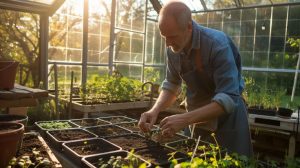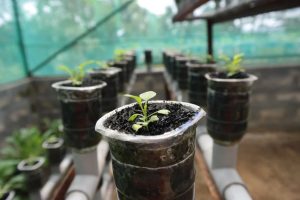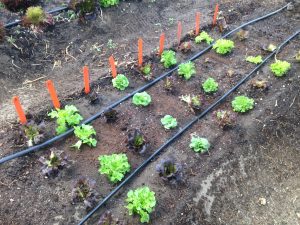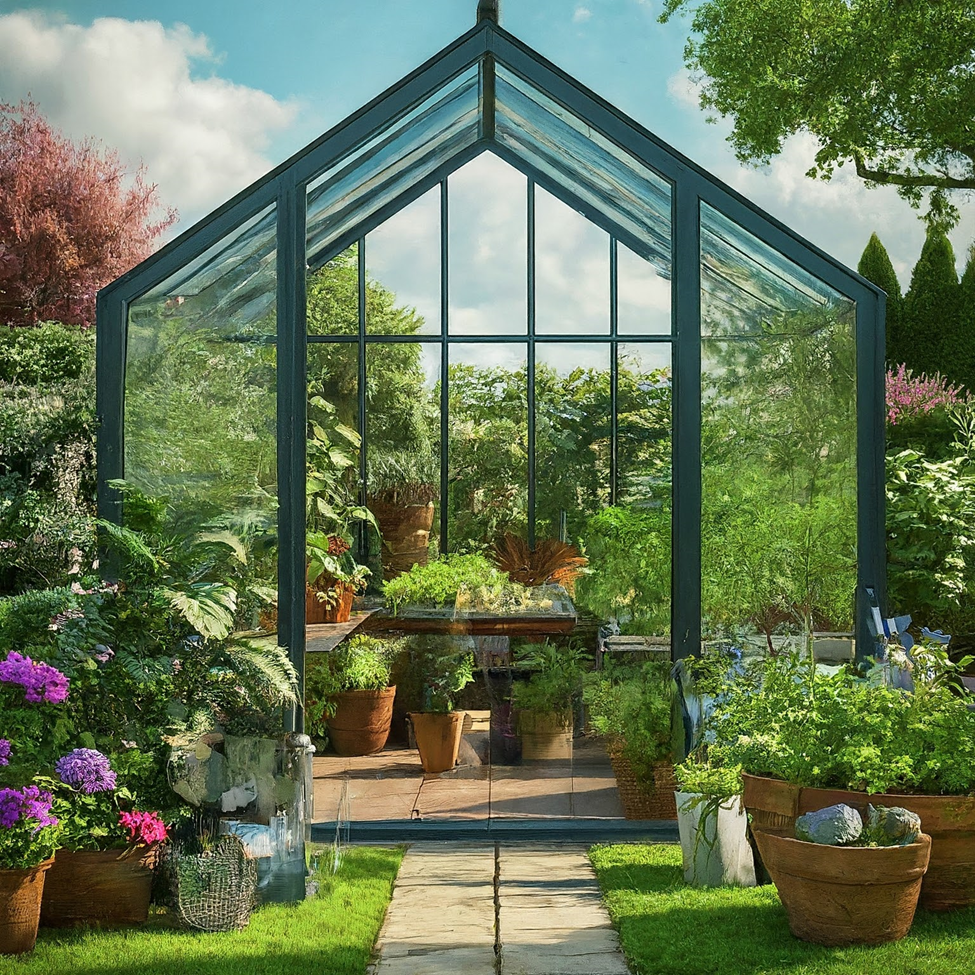Growing vegetables in greenhouses is just the start. The long-term goal is better yields, not by doing more, but by getting the most out of the space you have. These greenhouse food growth tips can help you achieve that with less trial and error.
Rework Your Layout

If your harvests aren’t where they should be, your planting layout could be part of the problem. You might want to switch things around and arrange crops that need the same care, such as:
- Leafy greens (quick growers), such as lettuce, spinach, and rocket. All prefer cooler conditions, regular watering, and partial shade in summer.
- Warm-season fruiting crops like tomatoes, peppers, and aubergines. They do best in warm, sunny spots with steady watering and good drainage.
- Herbs mainly thyme, rosemary, and oregano. Wet or soggy soil and too much water aren’t their thing.
- Moisture-loving climbers, including cucumbers, melons, and courgettes. All need warmth, high humidity, and benefit from vertical growing support.
Think of growing them in raised beds or tiered shelving to make it easier to organise by crop type or growing cycle. For instance, you can dedicate certain sections for fast growers and slow crops, and so on.
Look up if the floor space is full, and go for vertical growing systems. These include trellises or stackable planters, both of which are effective for increasing your output. For one, you can grow multiple layers: upwards with trellises and at height with stackable planters.
Your layout might have worked first, but it’s a good idea to take a moment to see if it’s still working the way you want.
Try a Hydroponic Setup

This is worth considering if you wish to grow more in the same space, especially for leafy greens, herbs, and other quick growers. Hydroponic is a method of cultivating plants without the use of soil. Instead, they receive all the necessary nutrients directly at their roots. This makes it space-efficient, too.
These options are simple to manage, affordable, and suitable for smaller crops:
- Deep Water Culture (DWC): Roots are suspended in a nutrient-rich solution with an air pump so they can breathe. Ideal if you’re starting and want to try a more hands-on system that’s simple to run.
- Nutrient Film Technique (NFT): A shallow stream of water that runs over the roots through sloped pipes, powered by a small pump and timer. Best for increasing plant numbers, and along walls or benches.
- Kratky Method: No pumps, timers, or electricity—just a container, net pots, and nutrient solution. Plants sit in a lid with their roots submerged in water. A good, low-maintenance option that can be placed in the corner of your greenhouse.
Hydroponics requires some monitoring. Get it running right, and you can grow with consistent results.
Light and Shade Control
Not all parts of your greenhouse get the same light throughout the day, and not all crops need the same amount. That’s where managing light and shade comes in.
Crops that produce fruit, for instance, need more direct light for longer stretches to stay productive. Others, such as leafy greens, can bolt if they receive too much heat and light, especially in midsummer.
Use shade cloths to reduce heat in those areas. Reflective surfaces also work, like white polythene sheets or foil insulation. Use them to direct more light to spots that don’t get enough. Add grow lights to the darker corners if you’re growing into the colder months.
Managing light this way means more crops stay in their ideal conditions for longer, resulting in a steady supply.
Succession and Intercropping

The idea of succession planting is the practice of when and how you plant. Instead of leaving beds idle between crops, you can stagger sowing times. For instance, sow lettuce every couple of weeks so you don’t have to wait for the first batch to finish.
Intercropping takes this a step further by using space smarter while crops grow side by side. Slower growers—say, tomatoes—don’t need all the room straight away. That extra space and light can go to fast growers like radish, salad greens, or spinach. Doing so, and they’re likely to be out of the way by the time the bigger plants fill out.
Both gardening techniques are handy if you’re picking as you go, not all at once.
Companion Planting
Another way to make the most of space is companion planting—growing crops that benefit each other side by side. For example, basil can enhance tomato growth while helping deter pests. Choose pairs that complement each other in growth habits, water needs, or pest resistance to improve plant health and yield.
Track What Works and What Doesn’t
Keep a log to keep track of your greenhouse food growth. Even just notes on what you planted, where, and how it did, so you can have something to refer back to. It gives you something to look back on and understand what grows well, what’s worth repeating, and what you can drop next time.
Use what you find to adjust your layout, timing, or crop choices. If a variety underperforms year after year, swap it. And if one or a few do well in partial shade or continue to produce longer than expected, build around that.
Over time, consider rotating your crops by season to help manage pests and soil health. Seasonal rotation—switching crop types between growing periods—can reduce disease build-up and improve long-term productivity, especially when growing vegetables intensively.
Greenhouse Food Growth: Round-up
Grow more, waste less. Small improvements in how you plan, plant, and adjust—as well as changes in layout, timing, or method, can give you greater yields. Some of these tips can also be useful in a potting shed. Overall, focus on what works for your greenhouse and keep improving from there.
First time doing this? Get more essential tips here: Greenhouse Gardening Guide

